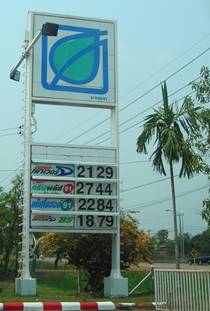Cost-plus pricing (mark-up pricing)
 This is a commonly used pricing technique, because it is simple to understand and implement and it appeals to organisations which are risk-averse. Cost-based pricing is when the price of the product is decided by its costs of production. The firm calculates the average cost of production and then adds a predetermined (agreed) percentage mark-up or profit margin. If successful this will ensure a certain amount of profit per unit sold.
This is a commonly used pricing technique, because it is simple to understand and implement and it appeals to organisations which are risk-averse. Cost-based pricing is when the price of the product is decided by its costs of production. The firm calculates the average cost of production and then adds a predetermined (agreed) percentage mark-up or profit margin. If successful this will ensure a certain amount of profit per unit sold.
The exact nature of this profit mark-up will depend on the market, but as a generalisation it is likely that high volume items will have a relatively low mark-up, whereas low volume items are likely to have a higher mark-up. This percentage is often governed by a corporate strategy on what is an acceptable return on the capital invested to make the product.
Ideally the firm will attempt to maximise its Profit Margin.
A cost-based pricing strategy ignores the effect of pricing levels on demand patterns and does not take into account market conditions and the pricing strategies of competitors.
Cost-based pricing problems
The focus of cost-based pricing is internal, not based on the needs of its customers. It also ignores the competition and the nature of the demand for the product. Will the market bear this price? To price in this way is very inflexible and unresponsive to market changes. One might assume that this method guarantees a profit, but this is far from true. If the price is too high, demand will fall. This will make indirect costs per unit higher. The firm may respond to this by raising price. This will reduce demand further and so the spiral continues ........
So the key disadvantages of cost-plus pricing are:
- Lack of responsiveness to market demand (and to the price elasticity of demand).
- Difficulties with calculation of costs - in particular the indirect cost element. Which costs should be attributed to the calculation and how much of each indirect cost is arte to allocate?
- Little attention paid to any investment that has taken place or is required. How will this be funded and how will any return on capital be included in the pricing?
- Little or no account is taken of what price is being charged by competitors, which may result in under-pricing or more likely over-pricing.
